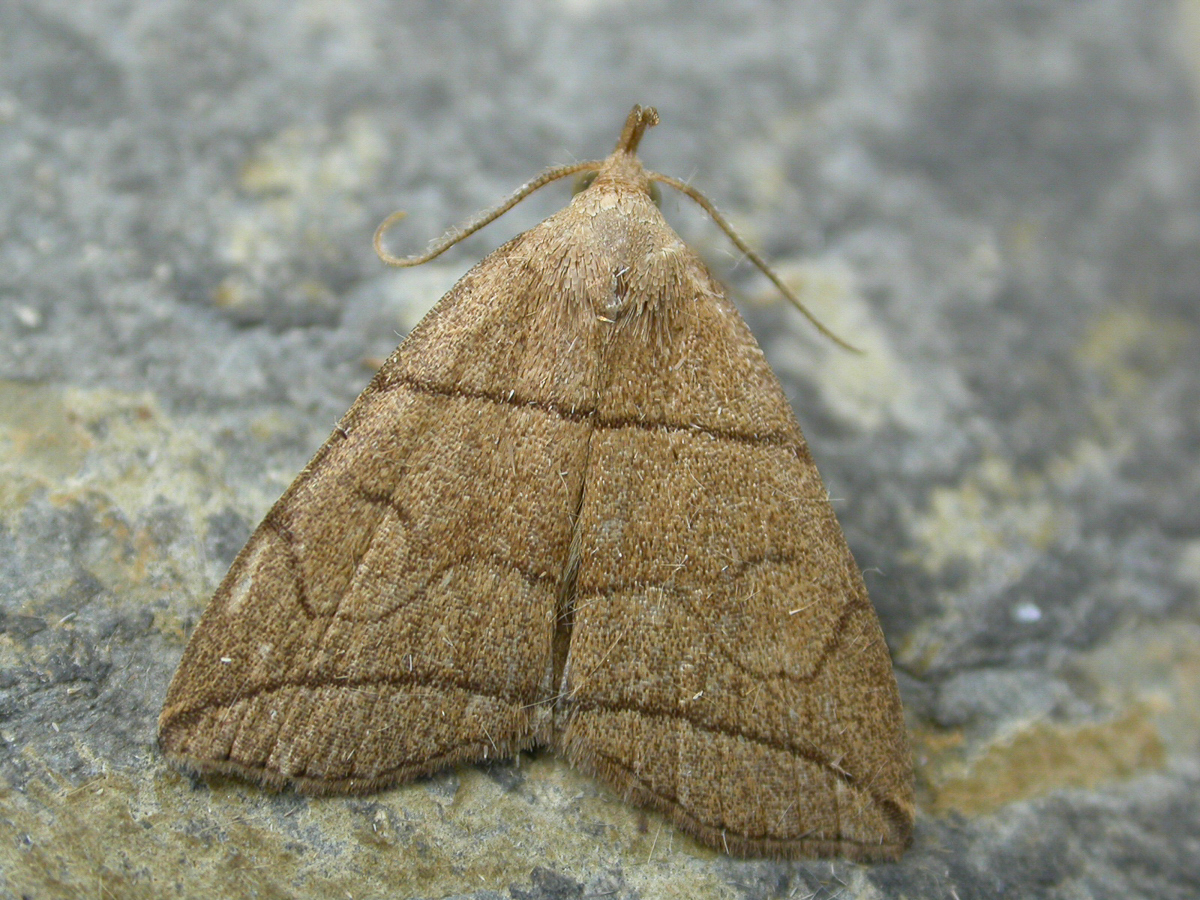
Photo © Andy Mitchell
Herminia grisealis, the small fan-foot, is a litter moth of the family Erebidae. It is found in Europe. The eastern expansion is across the Palearctic to the Ussuri River and after that Japan. In the Alps it rises up to a height of 1300 meters.
The wingspan is 24–28 mm. The length of the forewings is 11–13 mm. This species shows three darker lines crossing the greyish brown wings. The top and the lower lines run straight or lightly curved, while the middle one is undulating.
The forewing is grey brown often with a yellow tinge; lines dark brown; the inner straight, oblique, thick; the subterminal thick, concave outwards, curving into apex; outer line fine, sickle shaped; a short dark line at end of cell; hindwing quite pale grey with outer and subterminal obscure lines.
Small fan-foot usually rest during daylight, beginning their activities in early dusk. These moths fly in one or two generations from early May to mid-August. .
Larva is blackish grey, with a dorsal row of black triangles edged behind with yellowish grey, and black lateral oblique streaks; other descriptions make it reddish yellow grey. The larvae feed on various shrubs and deciduous trees such as oak, alder, birch, Crataegus, bird cherry, Corylus avellana, Rubus, Clematis vitalba and also fallen leaves.
Source: Wikipedia
The primary larval foodplants are Alder (Alnus glutinosa), birches (Betula spp.), Bird Cherry (Prunus padus), Bramble (Rubus fruticosus), Downy Birch (Betula pubescens), elms (Ulmus spp.), hawthorns (Crataegus spp.), Hazel (Corylus avellana), Hornbeam (Carpinus betulus), oaks (Quercus spp.), Pedunculate Oak (Quercus robur), Raspberry (Rubus idaeus), Rhododendron (Rhododendron ponticum), Small-leaved Lime (Tilia cordata), Sycamore (Acer pseudoplatanus) and Traveller's-joy (Clematis vitalba).